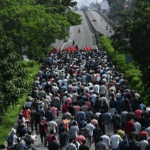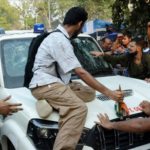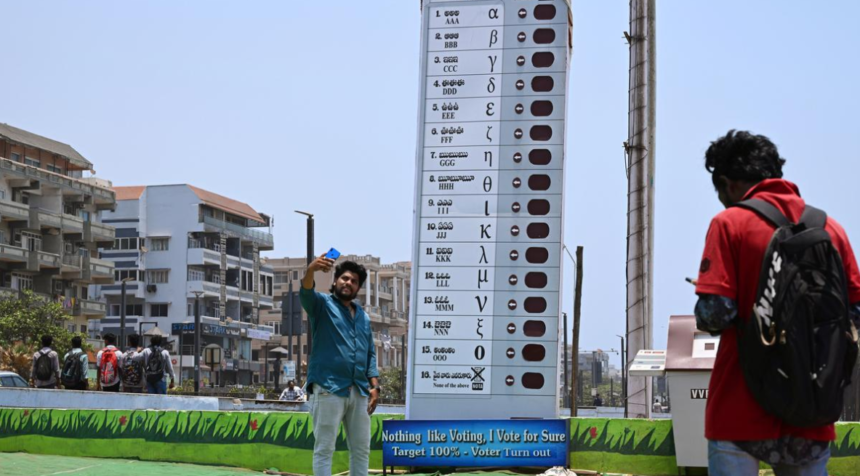The concept of “One Nation, One Election” has been a subject of debate and discussion in India’s political landscape for several years. The idea envisions conducting simultaneous elections across the country for the Lok Sabha (national parliament) and all state legislative assemblies. The goal is to streamline the election process, reduce costs, and improve governance by aligning electoral cycles. With the NDA government under Prime Minister Narendra Modi marking 100 days of its third term, sources indicate that the implementation of “One Nation, One Election” could become a reality during this tenure. Moreover, the long-awaited census exercise, which has not been conducted since 2011, is expected to begin soon, signaling the government’s push toward comprehensive governance reforms.
Understanding “One Nation, One Election”
“One Nation, One Election” refers to the idea of synchronizing the electoral calendar of the country, so both the general elections (Lok Sabha) and the state legislative assembly elections are held at the same time. Currently, elections in India are held separately for the Lok Sabha and for each of the 28 states and 8 Union Territories. The varying terms of state assemblies result in frequent elections, leading to a continuous cycle of electoral processes across the country.
Under the “One Nation, One Election” system, both national and state elections would be conducted simultaneously, potentially in a phased manner across regions. This model was practiced in India in the early years after independence, but over time, due to the premature dissolution of certain state governments and other factors, the electoral cycles became desynchronized.
Historical Context of Simultaneous Elections
Simultaneous elections were the norm in India during the first two decades after independence. The first general election, held in 1951-52, also saw state assembly elections being held concurrently. This practice continued until the 1967 elections. However, the premature dissolution of certain state assemblies and the instability of governments at both the national and state levels in the 1970s led to a divergence in electoral schedules.
Since then, India has experienced a staggered electoral process, with state assembly elections and general elections often happening at different times. This has resulted in frequent elections, which not only consume significant financial resources but also have a long-term impact on governance, as the implementation of policies is often stalled during the election period due to the Model Code of Conduct.
Reasons for Implementing “One Nation, One Election”
The Modi government has consistently advocated for the implementation of “One Nation, One Election” for several reasons:
- Cost Reduction: Elections in India are an expensive affair. The cost of conducting elections, which includes logistical expenses, security, and administrative resources, runs into thousands of crores. Simultaneous elections could significantly reduce the financial burden on the government.
- Improved Governance: Frequent elections lead to the imposition of the Model Code of Conduct (MCC), which restricts the government’s ability to launch new policies or announce new projects. This results in governance being disrupted frequently. With synchronized elections, the government can focus more on governance rather than being in perpetual campaign mode.
- Efficient Resource Utilization: Elections require extensive deployment of security personnel, electoral officers, and administrative resources. Simultaneous elections would streamline this process, ensuring that resources are not continuously tied up in election-related activities.
- Reduction in Political Polarization: The frequency of elections has contributed to a highly polarized political environment, as parties are in constant campaign mode. A unified electoral cycle could potentially lead to more focused and constructive political discourse.
- Voter Fatigue: Continuous elections can lead to voter fatigue, as citizens are required to vote multiple times in a short span. Simultaneous elections could help improve voter turnout and engagement by reducing the frequency of voting.
Challenges and Criticisms
While the idea of “One Nation, One Election” has garnered support from various quarters, it also faces several challenges and criticisms.
- Constitutional Amendments: Implementing simultaneous elections would require significant constitutional amendments. The terms of both the Lok Sabha and the state legislative assemblies are fixed, and any premature dissolution would necessitate legal and constitutional changes.
- Political Opposition: Several opposition parties have raised concerns that “One Nation, One Election” would centralize power and undermine the federal structure of the country. They argue that local issues in state elections would be overshadowed by national campaigns, leading to an erosion of state-specific governance.
- Logistical Challenges: India is a vast country with diverse electoral needs. Conducting simultaneous elections across all states and union territories would require meticulous planning and coordination. Additionally, logistical challenges such as the availability of electronic voting machines (EVMs), deployment of security forces, and ensuring free and fair elections could prove to be formidable.
- Impact on Coalition Governments: India has witnessed coalition governments both at the national and state levels. In cases where a coalition government collapses before completing its term, it would be difficult to maintain the synchronization of elections. This raises questions about how interim or mid-term elections would be managed under the new system.
- Voter Behavior: Critics argue that simultaneous elections could influence voter behavior, with national issues dominating state elections. This could lead to an imbalance in the way voters perceive and prioritize local governance issues.
Steps Toward Implementation
Despite these challenges, the Modi government has signaled its intention to move forward with the implementation of “One Nation, One Election” during its current term. The government has constituted committees and think tanks to study the feasibility of the proposal and suggest a roadmap for its implementation. The Law Commission of India has also been tasked with examining the legal and constitutional aspects of the proposal.
One possible approach to implementing simultaneous elections could involve holding elections for a select number of states along with the general elections, and gradually bringing other states into the fold over subsequent election cycles. This phased implementation would allow the government to address logistical challenges while ensuring that constitutional safeguards are maintained.
The Role of Census in Governance
Another key development on the horizon is the long-overdue census exercise. The last census in India was conducted in 2011, and the 2021 census was delayed due to the COVID-19 pandemic. The census is a critical tool for governance, as it provides comprehensive data on the population, including demographic, social, and economic indicators.
The Modi government’s decision to initiate the census exercise is a crucial step in ensuring that policies and programs are based on accurate and up-to-date data. The census will also play a significant role in determining the allocation of resources, representation in legislatures, and the implementation of various welfare schemes.
Importance of Census for Policy Formulation
Accurate census data is essential for effective policy formulation and implementation. The census provides detailed information on population growth, migration patterns, literacy rates, employment statistics, and the socio-economic conditions of different communities. This data serves as the foundation for various government programs, including those related to healthcare, education, infrastructure development, and social welfare.
In addition to providing a snapshot of the population, the census also helps in identifying trends and patterns that can inform long-term planning. For instance, the data on population density and urbanization can guide the development of infrastructure projects, while information on the age distribution of the population can help in designing healthcare and education policies.
Political Implications of the Census
The census also has significant political implications, particularly in the context of electoral representation. The data from the census is used to determine the delimitation of constituencies, ensuring that each constituency represents an approximately equal number of voters. This ensures fair representation in the Lok Sabha and state legislative assemblies.
Additionally, census data is used to allocate seats for reserved categories, such as Scheduled Castes (SC) and Scheduled Tribes (ST), in legislatures. The accurate enumeration of these communities is essential to ensure that they receive adequate political representation.
Challenges in Conducting the Census
Conducting a nationwide census is a massive logistical exercise that requires meticulous planning and coordination. The sheer size and diversity of India’s population present significant challenges, including reaching remote areas, ensuring the accuracy of data collection, and addressing concerns related to privacy and data security.
Moreover, the COVID-19 pandemic has introduced new challenges, as the government must ensure that the census is conducted safely, without compromising the health and well-being of both enumerators and respondents. The use of technology, such as mobile apps and online data collection tools, could help streamline the process and improve the accuracy of the data.
Conclusion
The Modi government’s ambitious plan to implement “One Nation, One Election” and initiate the long-delayed census exercise signals its commitment to comprehensive governance reforms. While the idea of simultaneous elections has its supporters and detractors, its potential benefits in terms of cost savings, improved governance, and reduced political polarization make it a compelling proposal. At the same time, the challenges involved—both logistical and constitutional—must be carefully addressed to ensure that the transition to a unified electoral calendar is smooth and fair.
Similarly, the census exercise is a critical step toward ensuring that government policies are based on accurate and up-to-date data. The successful completion of the census will provide valuable insights into India’s demographic and socio-economic landscape, helping the government address pressing issues such as resource allocation, political representation, and social welfare.
As the Modi government moves forward with these reforms, the focus will be on balancing the need for efficiency and modernization with the need to safeguard India’s democratic and federal structure. The success of these initiatives will depend on broad-based political consensus, meticulous planning, and the effective implementation of the proposed changes. ALSO READ:-Investment in Education and Skilling: A Critical Catalyst for India’s Growth 2024





